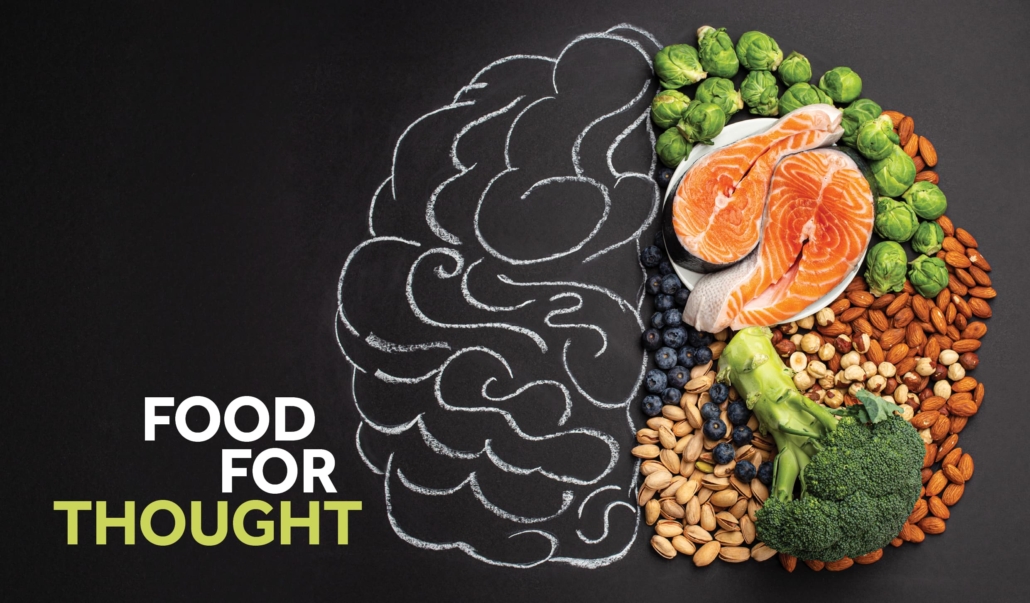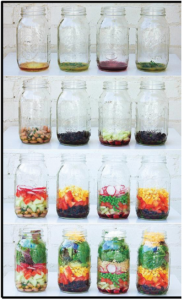Food For Thought
By A/Professor Yoram Barak
Last month’s brain health symposium featured Professor Yoram Barak from Otago’s Department of Psychological Medicine who presented on a new diet – appropriately known by the acronym MIND. The diet could significantly lower a person’s risk of developing Alzheimer’s disease, according to a study funded by the National Institute of Aging in the United States.
The study concluded The Mediterranean-DASH Intervention for Neurodegenerative Delay (MIND) diet lowered the risk of Alzheimer’s disease by as much as 53% in participants who adhered to the diet rigorously, and by 35% in those with moderate compliance.
It is a hybrid of the Mediterranean and DASH (Dietary Approaches to Stop Hypertension) diets, with modifications based on the science of nutrition and the brain.
The MIND diet places particular emphasis on eating “brain-healthy” foods including leafy greens, nuts, berries, dried beans, whole grains, fish, poultry, olive oil and a moderate intake of red wine.
A diet rich in these foods is high in fibre, antioxidants, vitamins and healthy fats – essential nutrients that encourage good blood flow to the brain and help fuel and detoxify brain tissue. Blueberries and strawberries were identified as especially powerful in protecting the brain.
The detrimental foods to avoid are red and processed meats, fried and fast foods, butter and margarine, cheese, pastries and sweets as these promote excess calorie intake and high consumption of saturated and trans fats. This clogs brain cells and impairs blood flow to the brain due to their harmful effect on vascular (blood vessel) health. As a result, the brain is affected by reduced nutrient availability and reduced toxin removal.
With diet in MIND:
• Eat at least 3 servings of whole grains each day as they are high in fibre, magnesium, folate and B6. This regulates blood pressure, blood glucose, cholesterol, lowers homocysteine (linked to heart disease and dementia) and helps develop blood cells.
One serving equates to:
Half a cup of cooked grains – brown, red or black rice, quinoa, millet or wholemeal pasta, One slice of wholegrain bread – grains visible, dark in colour, dense, heavy. Try pumpernickel, wholemeal or sourdough. Check the ingredients for use of wholegrains (eg bran, kibbled wheat, kibbled rye).
Half a cup of whole grain breakfast cereal – homemade bircher, toasted muesli or porridge. Use whole oats, millet, quinoa or Weetbix.
– Two wholegrain crackers
Swap couscous or white rice for buckwheat, quinoa, brown rice, millet or barley. Use for salads or with casseroles/curries. Add barley or brown rice to soups, sprinkle toasted buckwheat onto salad.
• Eat at least 3 servings of vegetables each day as they are loaded with antioxidants and fibre. Snack on vege sticks, load up a wrap with salad, take a salad to work. Make an extra-large pot of vege soup, portion and freeze.
• Eat legumes (lentils, chickpeas, dried beans, split peas) in at least 2 meals per week as they are high in fibre and protein but low in fat.
Add adzuki, blue peas, mung beans, alfalfa, chickpeas, lentils to salads or eat as a snack, add edamame beans to salads or stir fry, substitute meat for legumes to make vegetarian meals. Add beans to soups, casseroles and curries, Use kidney beans/black beans to make Mexican chilli, minestrone soup, bean dip, black bean brownie. Use cannellini beans for Tuscan bean soup, homemade baked beans. Use lentils in Dhal curry, lentil cottage pie, lentil loaf. Use chickpeas in curries, soups, salads, falafel, patties or hummus.
• Snack on a handful of nuts (30g) on most days, as they are full of heart-healthy oils and high in antioxidant vitamin E.
Mix with seeds and add to breakfast cereals and salads, make your own pesto with walnuts or pinenuts, add crunch to roasted vegetables, top quiches and bakes. Add walnuts to lentil or zucchini loaf. Substitute flour for ground nuts in baking. Add to bran muffins, make your own dukkah – sprinkle on salad, use to crumb fish or use as a dip for wholegrain bread or veggies (cauliflower works well). Make bliss balls with cashews, almonds or walnuts.
• Eat fish twice a week for extra heart benefits as it is lean protein low in saturated fat. Fish is high in heart-healthy omega-3s
Put tuna on wholegrain crackers or in a wholemeal pasta bake with leeks, tomato and goats’ cheese. Make a fish pie – try smoked fish and kumara mash. Put smoked salmon on a rye bread sandwich. Make a tinfoil parcel with Asian veggies, ginger, lemongrass, chilli, lemon and bake. Make Thai salmon fish cakes, brown rice salmon sushi, white fish with chilli and lime salsa, Dukkah crumbed fish or Cajun spiced fish pieces.
• Eat fruit every day in a variety of colours. Eat berries at least twice per week – especially blueberries and strawberries as they are high in antioxidants and polyphenols.
Add berries to smoothies, put on breakfast cereal, mix through plain low-fat unsweetened yoghurt, make a berry crumble for dessert. Replace sugar in baking with frozen berries, pour over buckwheat pancakes.
Try this salad in a jar for when you are on the go
- Put dressing in the bottom.
- Add a layer of hard, robust vegetables that will benefit from marinating eg root veg, fennel or cabbage.
- Next rice, barley, buckwheat noodles or legumes.
- Then fairly firm veg that can withstand some weight, followed by green beans, peas, capsicum or corn.
- Add another layer of more delicate vegetables such as roasted aubergine or pumpkin
- Add a layer of protein such as tofu, chicken or fish, then dry protein such as seeds, buckwheat and nuts.
- Top with salad leaves and herbs.
- Shake and serve in a bowl.
This article was originally published in Our Mind Matters Magazine Issue #40.




